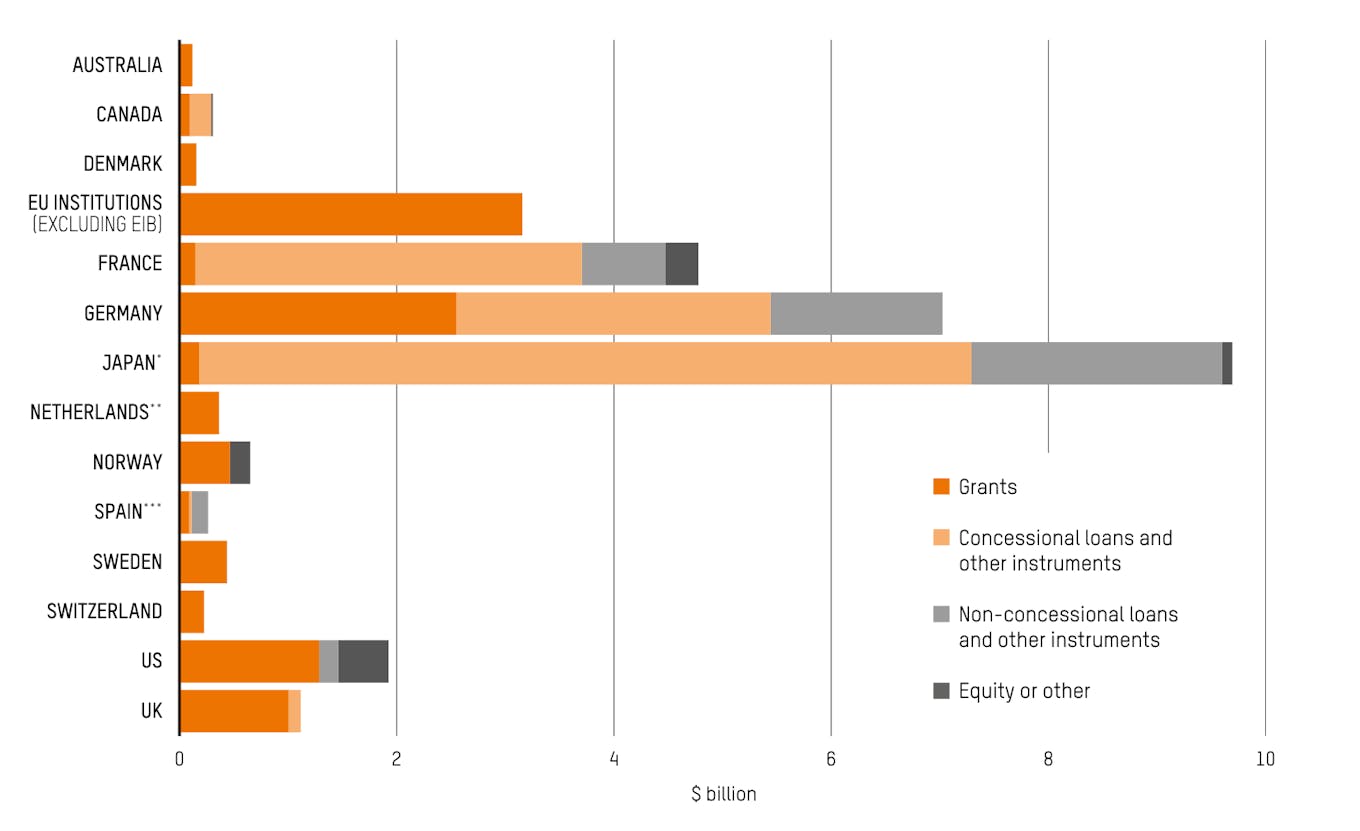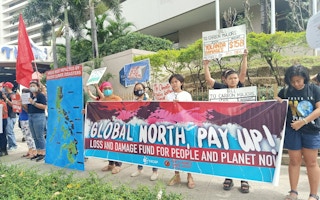Financing arrangements for the global loss and damage fund must not come in the form of loans, which add to the debt burden of countries most affected by the climate crisis, civil society organisations (CSOs) from the Global South have said.
To continue reading, subscribe to Eco‑Business.
There's something for everyone. We offer a range of subscription plans.
- Access our stories and receive our Insights Weekly newsletter with the free EB Member plan.
- Unlock unlimited access to our content and archive with EB Circle.
- Publish your content with EB Premium.
In a submission to the Transitional Committee (TC) ahead of its second meeting on 24 May in Europe, 118 CSOs including those from the Philippines, Indonesia, India, Pakistan and Bangladesh, among others, said resources mobilised for the loss and damage fund must be “new, non-debt creating and additional, above and beyond any development assistance and existing financial commitments”
Soliciting inputs for succeeding meetings from observers, parties and other stakeholders is a common practice under United Nations Framework Convention on Climate Change (UNFCCC) processes.
“Developing countries are disproportionately experiencing losses and damages on top of being saddled with huge debts. The Global South must not be forced to take on more debt to pay for a crisis it did not create,” said Lidy Nacpil, coordinator of the Asian Peoples Movement on Debt and Development (APMDD), a regional alliance of 50 member organisations and movements.
Nacpil cited a 2020 report by Oxfam International which found that 80 per cent (US$47 billion) of all reported public climate finance was not provided by wealthy countries in the form of grants, but mostly as loans and other non-grant instruments.
Around half of the climate funds were non-concessional, offered on ungenerous terms requiring higher repayments from poor countries.

Out of the US$58.5 billion climate funding recorded from 2017 to 2018, 80 per cent of it was reported as loans and other non-grant instruments, led by Japan, Germany, France and the United States. Source: Oxfam International 2020
“Extending loss and damage finance in the form of loans goes against the principle and obligation. Loans mean they are asking people from developing countries to pay for the cost of loss and damage that developed countries are accountable for,” Nacpil added.
The loss and damage fund, agreed upon in last year’s 27th session of the Conference of Parties (COP27), is designed to help vulnerable countries recover from climate disasters.
The first TC was in March in Egypt, with a deadline for this climate talks at the end of this year. The meetings are meant to address the questions of how the fund will operate, who will pay, who will benefit and how it will be governed.

Eighty per cent of all reported public climate finance has been given as loans by wealthy countries. Image: Kalikasan People’s Network for the Environment (Kalikasan PNE)
CSOs: asking to be more than just observers
CSOs also want the transitional committee to allow a representative from the grassroots groups to be present in the meetings, with more than just an observer status.
In the last TC meeting, CSO representatives were confined to delivering one to two minute speeches on their inputs on how to operationalise the fund, then proceeded to watch the meeting in a separate “overflow room” adjacent to the main negotiations.
“As representatives of people and communities in the Global South, CSO representatives must have voting privileges and the right to speak, and be fully consulted in consensus-based decisions,” noted the submission.
The operations of the fund must also be “transparent”, falling under an independent secretariat, that is hosted by a developing country with no connections to private institutions, banks, or international financial institutions, said the signatories, which include those from Indonesia’s Koalisi Rakyat untuk Hak Atas Air (KruHA: People’s Coalition for the Right to Water), the Pakistan Fisherfolk Forum, Centre for Environmental Justice in Sri Lanka and the National Hawker Federation in India.
The submission also highlighted the need for a “comprehensive reporting system” to track the sources and contributions to the funds, as well as the distribution and use of funds. This reporting system must be publicly accessible and include all major decisions, allocations, financial agreements, transfers, progress and outcomes, expenditures and post programme evaluation.
It read: “The Loss and Damage Fund is the fund for the people and communities of the Global South, and its citizens must be allowed to see how much money is being generated from what sources, and to understand its operations and enforcement… [it must be] transparent and accountable to the public and citizens of all countries, but most especially to the people and communities affected by the climate crisis.”












